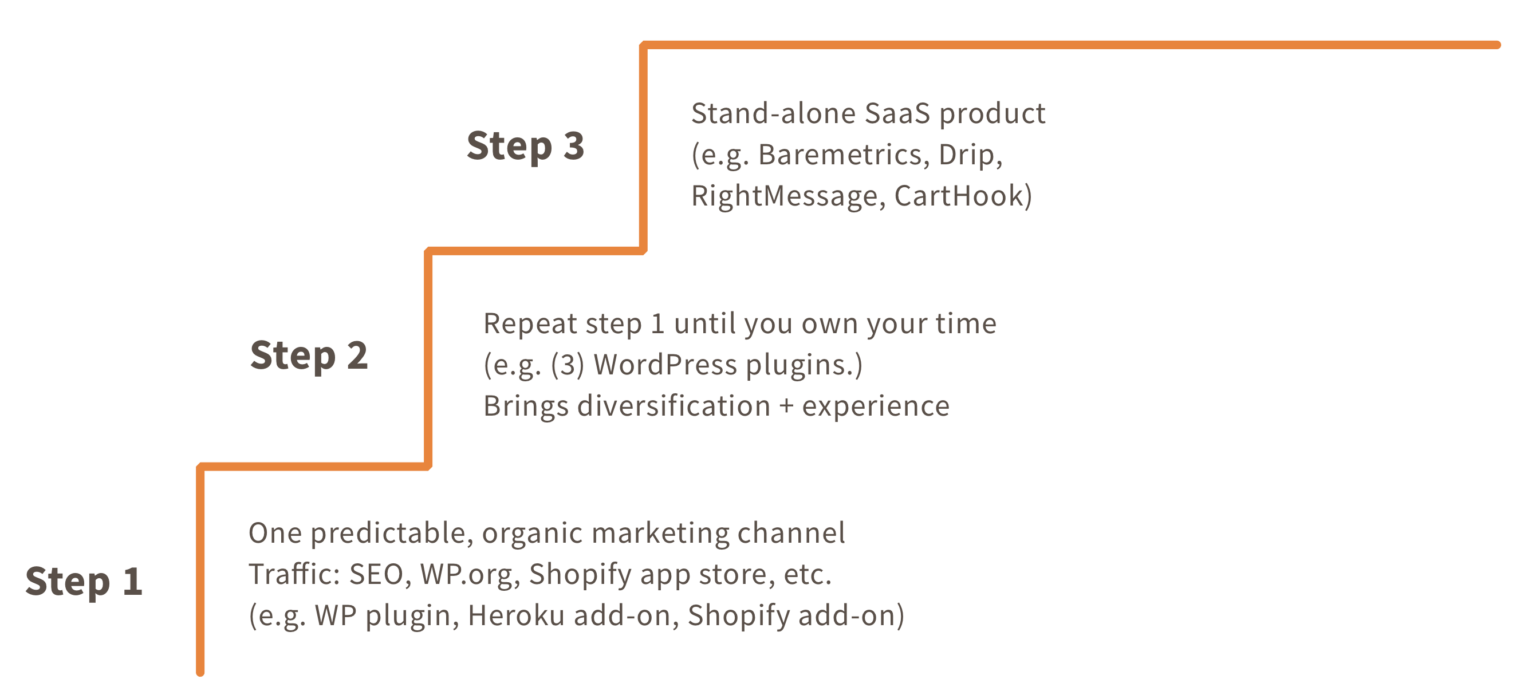Bootstrap 1000 Challenge
The stair-step approach for profitable side projects

As I browsed for a new domain during a layover in Houston, my wife asked if I had ever done a retrospective on my side projects.
Surprisingly, the answer was no. While waiting on a delayed Southwest flight, I had plenty of time to write out the full list of projects and reflect.
The list was pretty long: QuarantineCup.live, Quicker Questions, Next.js Notes, Share-a-podcast, Podcasted, Vitals.guide, PlzDM.me, FitVitals.dev.
It got even longer with current and back burner projects: drew.tech, 3-2-1 Tech newsletter, wellread.io, & Tokk.ai.
Sitting looking at the list, I started asking myself hard questions to answer like:
Were these projects successful?
What do I want out of these projects?
What makes me stick with a project?
Which of these was I most happy working on?
Do I even want to work on all of these?
Let's get into the answers and themes.
Where did I succeed?
In the beginning of my career, side projects were helping me level up my engineering skills, step outside of my day job comfort zone, and learn more about the business side of things.
After all, you only get exposed to so much of a business as an engineer in a company. Monetizing side projects shows you the wider spectrum of what you need to do in a company.
While none of the side projects listed above helped with my financial goals (I've made less than $1,000 on them in fact), they helped me get a job, build my tool belt, and learn to ship complete products.
Now that I've got my dream job and my tool belt is well-equipped, I can ask what do I really want out of these projects?
I'm not entirely sure, but I know I want to:
- build products that I can personally use
- diversify my income
- and share my progress along the way.
Bootstrapping is full of options. Those goals are pretty vague, so I decided to come up with a framework/challenge to keep myself accountable to these goals.
Where did I fail?
In looking at the lists of projects I view as failed, there are a few common themes:
- I lost interest in the project
- I wasn't consistent
- I tried to build something I wasn't an expert in
These are all issues I run into with the "good idea" trap. You know, when you come up with a "good idea" that you think will be quick to make and easy to sell? And then you realize that's not true at all? Yeah, that happened to me quite a few times.
If I've learned anything in my bootstrapping journey, it's that it's going to take longer than you think. Unfortunately, all of my plans to be an overnight success haven't panned out yet.
So if that's true, what can I do to adjust?
For one, I need to be more consistent. Prolific makers on the internet say that showing up every day for two years can change your life. I fell short here.
Secondly, working on things that genuinely interest me is vital. For me to persist, not losing interest is the most imporant factor.
And finally, I need to work on problems where I'm an expert since I'll only be working part-time.
Why?
Because I'm likely not going to do enough customer interviews and my time is limited.
If you can work full time on your product, this constraint likely isn't as important.
So what's next?
Thinking and reflecting is great, but all of it means nothing if I don't put that knowledge into practice.
I wanted to come up with a system that helps me ship consistently. I need something more than a big hairy goal. I need to feel like I'm making incremental progress, regardless of the outcomes of my projects.
And that's how I arrived at...
The Bootstrap 1000 Challenge

The challenge is: Replicate your current full-time salary from bootstrapped products with 1,000 days of effort.
This leads to two main goals:
- Create a maintainable system for shipping for 1,000 days
- Create a profitable business
The inspiration behind this challenge is great advice from several people who've done this before summed together.
While a lot of advice is "here's a shortcut" in nature, the advice from the people above acknowledges that building is hard work, it takes time, and there's no such thing as an overnight success.
Their advice:
- Be a member of your market (30x500)
- Stair step up in difficulty (Rob Walling)*
- Optimize for your own excitement (Daniel Vassallo)
- Aim for 1000 days, treat it like a business (Tropical MBA)
*The stair-step method from Rob Walling is central to this challenge.

The goal of the stair-step approach is to keep projects smaller until you're skilled in running a business and are able to focus on a larger project full-time.
In the past, I bit off tons of complexity on projects. I've made this mistake in terms of the engineering difficulty and in terms of project scope. You can read about my attempt with FitVitals on IndieHackers. The TLDR; I thought I could finish a very complicated SaaS in a week 😅
This challenge doesn't focus on one specific spot in the ladder but instead emphasizes the importance of progression. I'm starting on the first step and climbing my way to the top.
While it's not critical to be a member of your market, creating products for a market you're a part of can be a super power. I'm using my unfair advantages in this challenge.
Even more important than the market is motivation. I'm prioritizing my excitement above all. Life is short, I'm not going to waste my time.
What are the rules?
While bootstrapping is full of flexibility, these rules are here to help keep me on track and accountable.
- Make small & measurable progress towards your goal.
- Tweet progress updates using the
#bootstrap1000hashtag (or keep a private log). - Each Tweet counts towards the 1,000 days of effort.
The task doesn't have to be big. It could be as small as tweaking one line of CSS and as large as shipping an MVP of a product.
Follow along with my progress here:
Get started
- Tweet about joining the Bootstrap 1000 challenge
- Reply to this tweet each day you make progress
- Repeat 999 more times
Click the Tweet button below to join
Tweet
See you on the other side,
Drew
FAQ
Do I have to work on one product for the 1,000 days?
Nope, I'm going to ship a new level-one stair-step product each quarter. Right now, that project is beesocial.io. Come up with a system that works and is sustainable for you.
Do I have to Tweet?
It's up to you! I'm motivated by social accountability; that's why I Tweet my progress.
Why create this framework?
I really loved video games when I was younger. Gamification helps me out a ton.
That's a lot of failed projects you've got there. What will be different this time?
Persisting through a bunch of failures seems to be the rule for successful bootstrappers, not the exception. I'm hoping this challenege can help me and others focus on the process of shipping instead of being goal-focused.
